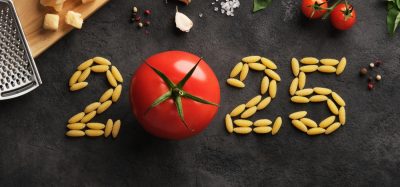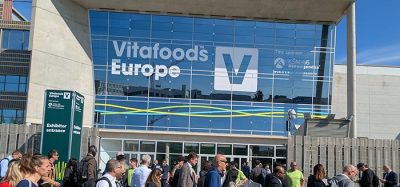NovelQ contributes to Europe’s innovation strategy
- Like
- Digg
- Del
- Tumblr
- VKontakte
- Buffer
- Love This
- Odnoklassniki
- Meneame
- Blogger
- Amazon
- Yahoo Mail
- Gmail
- AOL
- Newsvine
- HackerNews
- Evernote
- MySpace
- Mail.ru
- Viadeo
- Line
- Comments
- Yummly
- SMS
- Viber
- Telegram
- Subscribe
- Skype
- Facebook Messenger
- Kakao
- LiveJournal
- Yammer
- Edgar
- Fintel
- Mix
- Instapaper
- Copy Link
Posted: 16 November 2007 | Huug De Vries, Project Co-ordinator, NovelQ | No comments yet
The European Commission’s (EC) strategy in the past ten years has been changed from stimulating and supporting scientific projects in specific research areas towards more integrated research projects. The term ‘integrated’ refers to multi-disciplinary approaches to address and find answers for complex research questions. In 2000, the definition of the Lisbon Agenda – focused on three per cent innovation rates in Europe, thereby increasing the European competitiveness – has added another dimension, namely a new balance in supporting basic science up to applied research and demonstrations with the goal to achieve successful market implementations of scientific findings[1].
The European Commission’s (EC) strategy in the past ten years has been changed from stimulating and supporting scientific projects in specific research areas towards more integrated research projects. The term ‘integrated’ refers to multi-disciplinary approaches to address and find answers for complex research questions. In 2000, the definition of the Lisbon Agenda – focused on three per cent innovation rates in Europe, thereby increasing the European competitiveness – has added another dimension, namely a new balance in supporting basic science up to applied research and demonstrations with the goal to achieve successful market implementations of scientific findings[1].
The European Commission’s (EC) strategy in the past ten years has been changed from stimulating and supporting scientific projects in specific research areas towards more integrated research projects. The term ‘integrated’ refers to multi-disciplinary approaches to address and find answers for complex research questions. In 2000, the definition of the Lisbon Agenda – focused on three per cent innovation rates in Europe, thereby increasing the European competitiveness – has added another dimension, namely a new balance in supporting basic science up to applied research and demonstrations with the goal to achieve successful market implementations of scientific findings[1].
As a next step, the concept of European Technology Platforms has been launched. Here, the industry has been asked to take the lead in defining the European R&D agenda for the area in which they are active. Recently, the concept for the European Institute of Technology (the EU version of MIT in Boston, USA) has been presented. Strong footholds – either as virtual networks or physical centres – should arise that further strengthen innovations in Europe. The recently published EC Green Paper “European Research Area: New Perspectives” provides information for debates on joining forces in Europe.
For the Integrated Project (IP) NovelQ – now in its second year – the first question is “How can we contribute to the above-outlined strategy of the EC?” Secondly, “What suggestions could be given towards the EC, industry and knowledge centres based on first findings within NovelQ?”
A multi-disciplinary approach of NovelQ
NovelQ is focused on developing and successfully demonstrating novel processing (NP) schemes in Europe through substantially extending shelf-life, providing food with fresh characteristics and enhancing eco-friendly innovative processing[2].
In order to achieve incremental innovations and overcome bottlenecks, a multi-disciplinary approach has been chosen. The NovelQ consortium with 32 partners has been established based on this approach. Industrial partners join forces with applied research centres and universities in 13 European countries and two targeted third countries (Argentina and South Africa).
In year one, results in basic science include first models for the kinetics of food safety and quality attributes as a function of combined high pressure and elevated temperatures as well as for different pulsed electrical fields strengths. Also, the first indicator systems as sensors for process impact have been developed and concepts for biodegradable and bio-active films have been formulated that are suitable for high pressure and cold plasma treatments.
Consumer behaviour and perception towards NP is another key area of which results have led to a substantial knowledge database with comparisons between a number of agri-food oriented technologies and their appreciation by consumers.
Further down the knowledge chain, first versions have been developed for user-friendly software to predict shelf life and for a decision support system selecting most appropriate NP schemes. The next step will be the development of a framework for a computer-aided system to be used to combine product design, packaging and process optimisation.
Since eco-friendly processing and waste valorisation are imperative in novel approaches, a first Life Cycle Assessment on HP treated foods is carried out and a novel robotised hygienic handling scheme is designed for NP based processing lines.
In addition, a Training and Career Development Network (TCD) has been set up for over 40 young scientists to be trans-nationally coached by senior scientific experts in different research areas within the NovelQ consortium. The aims of the TCD Network are to train and equip individuals with a wide range of background knowledge and practical skills that will facilitate and promote their future career development. The industry and society will benefit from well trained and skilled scientists with a European focus. The TCD Network can be contacted for organising joint activities within and outside the scope of NovelQ.
Since the European Federation of Food Science and Technology (EFFoST) is partner in NovelQ, dissemination of the TCD activities as well as of multi-disciplinary results achieved under the NovelQ project is well guaranteed. In November 2007, a NovelQ workshop has been organised at the annual EFFoST conference in Lisbon, jointly organised with the European Hygienic Engineering and Design Group (EHEDG).
Incremental innovations, a new balance in science and market-driven research
NovelQ has adopted a twofold strategy that on one hand provides a sound scientific base for the very promising, but still emerging NP schemes such as high pressure sterilisation, pulsed electrical field for pasteurisation and cold plasma for disinfection. On the other hand, more advanced heating technologies such as ohmic heating, radio frequency and microwave have been researched and demonstrated right from the start of the project. It allows industry to actively participate in year one and not to have to wait for the first findings until year four. This is of importance especially for SMEs in the agri-food area. For them, a time horizon for R&D is often shorter than for multinationals with substantially large R&D departments and investments.
Another advantage of this strategy is the possibility to show best practices in the first half of the project. Some of the industry-driven best practices include ohmic heating for pasteurised Mediterranean vegetable dishes in the South of France, continuous microwave for ready meals in Sweden and sterilised meal components using radio frequency heating in the Netherlands.
Since a call for additional industrial partners has been launched, positive outcomes may attract other companies to take part in new demonstration projects. This in fact should be a continuous process resulting in a snowball effect, i.e. more and more best practices demonstrated by companies based on convincing outcomes of others.
In fact, previous and most running R&D projects stop as soon as the first results that are of interest to industry have been delivered. The next project starts from scratch. Here, a joint strategic approach of the EC Directorate General (DG) Research and DG Enterprise may lead to more efficient use of research findings and successful implementation as we hope to achieve with NovelQ.
The ETP approach, involvement of industry in agenda setting
The European Technology Platforms (ETP) provide a framework for stakeholders, led by industry, to define research and development priorities. The ETP Food for Life was created under the auspices of the Confederation of the Food and Drink Industries. Representatives of industry and knowledge centres have jointly defined a new research strategy for the food sector. The third key challenge – as stated in the ETP Food for Life – is developing value-added food products with superior quality, convenience, availability and affordability. The four main goals are:
- Producing tailor-made food products
- Improving process design, control and packaging
- Improving understanding of process, structure and property relationships
- Understanding consumer behaviour in relation to food quality and manufacturing
All these goals for future research are already addressed within NovelQ, because some of the participants in the ETP working group are actively involved in NovelQ and related EU projects such as REPRO, Healthy Structuring, Double Fresh and HighQ RTE.
In this respect, NovelQ has set up an Industrial Advisory Platform (IAP) with over 45 members of the food manufacturing and equipment supply industries to get feedback on best practices and unresolved hurdles in the area of novel processing. Herewith, the ETP approach is further outlined and brought into practice in the NP domain. In return, IAP members are directly informed about NP activities via a NovelQ IAP website and IAP meetings (the last was held in Spain, October 2007). The IAP membership is free of charge.
As already mentioned, joining and setting up demonstration projects via the call for additional industrial partners is the most direct way of steering research in the NP area. Here, IAP members have the advantage of already being informed about the NovelQ approach.
New co-operation models for innovation
Co-operation for the sake of co-operation does not last long, either in Europe nor in one of its Member States. The European Institute of Technology concept is challenging, especially as a virtual centre, however, one could ask what the main drivers are for co-operation in the food sector. Could those be defined and agreed upon by all parties involved? What can be learnt from the NovelQ project and what from other Integrated Projects, Network of Excellences, the ETP Food for Life, Foodforce (a management group of European food research organisations) and others?
What deliverables are useful for new co-operation models from the Food Innovation Network Europe (FINE) project providing information on competitive and innovative regional clusters in the European agri-food sector? What are the pros and cons of public-private based governance models such as the Dutch Top Institute Food and Nutrition, industrial membership based knowledge centres, public-private research foundations, open innovation platforms and others?
The complexity of this question requires a separate study. However, quite interesting insights could already be obtained reviewing the way how the NovelQ consortium partners are organised and/or are currently changing their organisational strategy. The Danish partners have integrated all food research disciplines into one Centre, the partners from University Montpellier II (France) are currently transforming in a similar direction with other research centres. TU Berlin (Germany) has built a strong connection with German Institute of Food Technology (DIL) to cover the whole science chain (from basic to applied). The same holds for Wageningen UR with their Science Group Approach (The Netherlands) and KU Leuven (Belgium) with their university departments and contract research entity. Research centres with industrial members, such as CCFRA (UK), SIK (Sweden) and CTCPA (France), have joined forces in applied research support towards their industrial customers. English, Spanish, Hungarian, Czech, Norwegian, Finnish and Italian partners in NovelQ are continuously discussing new strategies in the public-private research domain.
Consequently, NovelQ may be considered as a first, immature concept of a ‘Knowledge and Innovation Community’, without even realising it. As a next step, one could sketch a blueprint of a ‘Virtual Knowledge and Innovation Centre’ including relevant players active in the network of basic and applied research, demonstration and dissemination up to implementation at industrial scale.
The complexity, success and exploitability of such a Centre needs to be attentively considered from different points of view. First, the agri-food sector is on one hand regionally oriented due to a substantial number of SMEs, on the other hand globally due to some European-based multinationals. Therefore, R&D support is required towards SMEs in the direct neighbourhood as well as towards multinationals with larger scale strategic research programmes. This implies covering the full knowledge chain.
A multi-lingual one-stop-shop may help consisting of a network of centres having a sound basis of widely applicable technologies and on top of that are specialised in one or a few novel technologies. Focusing on a limited number of specific new R&D topics is of key importance in order to be a visible, reliable, complementary and thereby interesting co-operation partner. Also, investments in expensive pilot-scale facilities – available to both SME and multinationals – could be shared between reliable partners that have similar working approaches. Finally, exchange of experts could be an advantage, e.g. in case new competencies, skills and critical mass are requested or the number of newly trained experts is rather limited.
Next, the direct environment of a science park could help to increase innovation spirit, even more in case of cross-sector R&D. A public-private based financing mechanism allows a focus on both short and long term trajectories. Here, one deals with new forms of governance.
Conclusion
With new co-operation models in mind, one should positively face the innovation potential of Europe. Especially, in the area of agri-food and nutrition, European wide co-operation will allow us to face major trends. Food impact on health (for example, obesity related diseases) and on the environment (for example, climate change) could not be tackled by individual groups. In this respect, European strategies should be transparent and in line with what is needed. The NovelQ consortium and other European groups are privileged to support this strategy and practically approach the challenges that lay ahead of us.
Acknowledgements
The author would like to thank his NovelQ colleagues and especially Prof. Dr. D. Knorr and Dr. R. Fenwick for discussions
More information
The following websites are worth consulting for further reading and detailed information about workshops and news items, www.novelq.org (IAP, TCD, workshops), http://europa.eu/pol/rd (EU R&D programmes), http://www.effost-ehedg-conf.elsevier.com (annual conference), http://etp.ciaa.eu/asp/home/welcome.asp (ETP documents).
References
- It should be noted that this may have led to only market-driven research. In parallel, a new European programme has been launched to support basic science and pure creativity out of which often the new ideas for next generations will evolve.
- NovelQ is carried out with financial support from the Commission of the European Communities, Framework 6, Priority 5 ‘Food Quality and Safety’, Integrated Project NovelQ FP6-CT-2006-015710.









